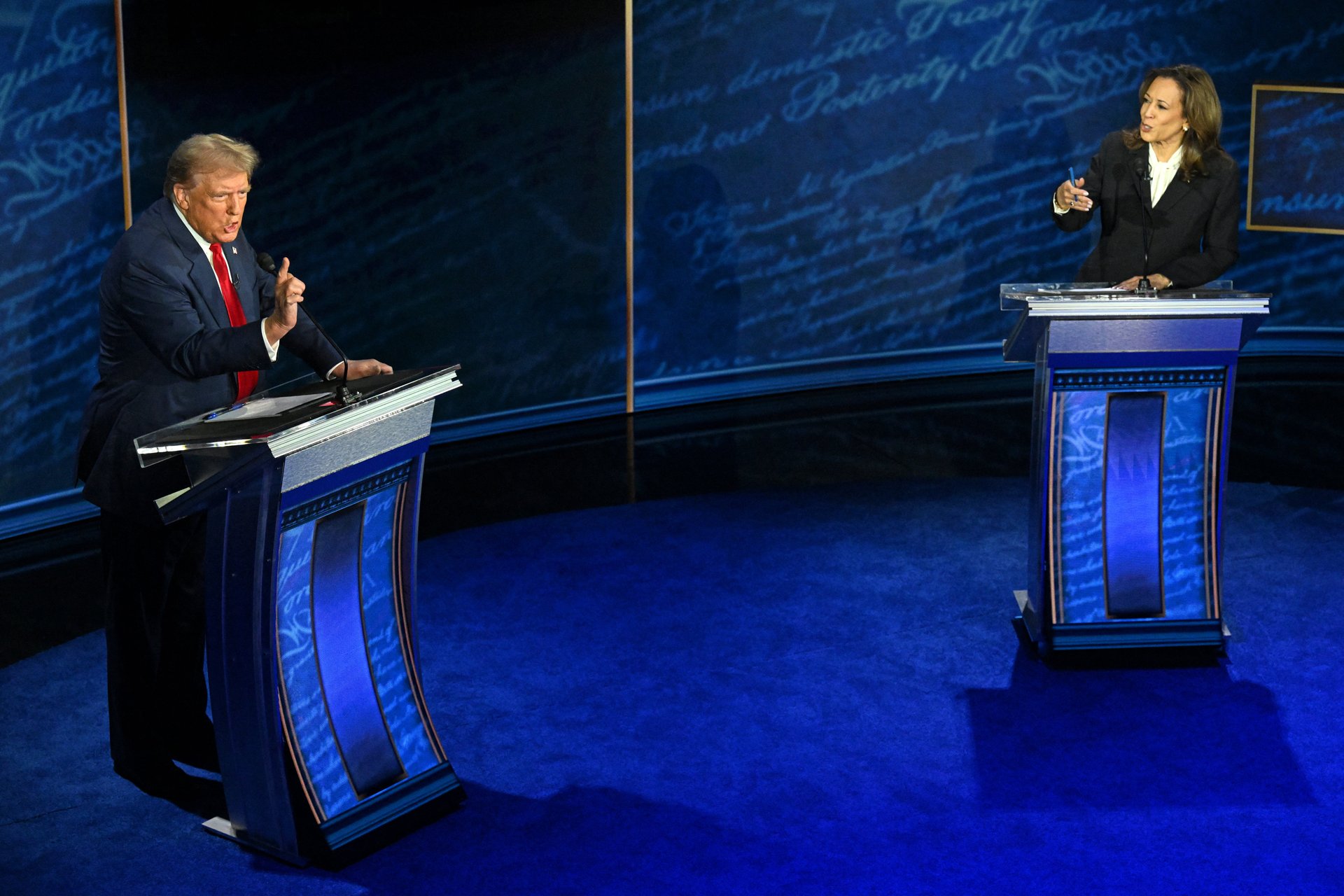Donald Trump would balloon the federal debt by twice as much as Kamala Harris, report says
Both candidates are almost guaranteed to raise the federal debt by at least a couple trillion dollars, according to a budget group's analysis

Regardless of whether Former President Donald Trump or Vice President Kamala Harris becomes the next president of the United States, there’s at least one clear loser — deficit hawks.
Suggested Reading
According to a new analysis from the nonpartisan Committee for a Responsible Federal Budget (CRFB), both candidates are almost guaranteed to raise the federal debt by at least a couple trillion dollars. In the nonprofit’s “central” estimate of the candidates’ economic plans, Harris would add $3.5 trillion in debt through fiscal year 2035, while Trump would double that figure to $7.5 trillion. The current deficit is at around $35.6 trillion, according to the Treasury Department.
Related Content
According to the CRFB’s low-cost estimate, Harris would not add to the debt at all, while Trump would contribute $1.45 trillion. In the high-cost analysis, Harris could add as much as $8.10 trillion, compared to Trump’s $15.15 trillion.
For comparison, as of June, President Joe Biden added $4.3 trillion to the national debt, largely thanks to his American Rescue Plan and Bipartisan Infrastructure Law. Trump’s first term added $8.4 trillion, or $4.8 trillion excluding funding tied to the COVID-19 pandemic.
Much of Harris’s additions to the debt come from her plans to extend Trump’s 2017 tax cuts for households making less than $400,000 a year, which would add $3 trillion in debt, and expanding the Child Tax Credit and Earned Income Tax Credit, which would add $1.4 trillion. Other pricy proposals include her plans to extend the Affordable Care Act’s subsidies, support education, establish national paid leave and medical leave, and expand access and funding for prekindergarten and child care.
Under the central estimate, her proposals would add a combined $7.2 trillion to the deficit. But her pledges to raise some taxes, slash prescription drug prices, and reform international tax rules would slash more than half of that figure. Boosting the corporate tax rate to 28% from 21% — effectively rolling back Trump’s 2017 cuts — would provide $900 billion in revenue, according to the CRFB.
Trump’s pledge to extend and modify his 2017 tax cuts would add more than $5.3 trillion in debt, while his other cuts — including ending taxes on social security benefits, as well as taxes on tips and overtime — would add another $3.8 trillion. The candidate’s plan to address immigration by deporting millions of people would add $350 billion.
Meanwhile, Trump’s plans to raise tariffs by 10% on all imports — and up to 60% on those from China — would raise $2.7 trillion. Combined with a handful of other measures, he would slash just $3.7 trillion from his projected cost.
“America desperately needs a leader with the wisdom and courage to make correcting our unsustainable fiscal trajectory a major priority,” the CRFB said in its report. “Yet, both the Republican and Democratic candidates for President have put forward campaign plans that would, at best, maintain the status quo and, at worst, add tremendously to our debt and deficits.”
It’s worth keeping in mind that these are estimates and don’t necessarily include every aspect of the candidates’ plans. The CRFB notes that there is some uncertainty in how some proposals would be installed. Trump’s plans to cut taxes on overtime pay could reduce revenue by between $1.7 trillion and $6 trillion from fiscal year 2026 through 2035, depending on how it’s implemented, according an earlier analysis from the group.
Although many voters don’t tend to consider the federal debt or deficit when they head to the ballot box, it’s a big concern for some high-profile executives. JPMorgan’s (JPM) Jamie Dimon has warned that the U.S. should deal with the federal deficit sooner than later before it becomes a problem, while Citadel CEO Ken Griffin has called it “a growing concern that cannot be overlooked.”
The University of Pennsylvania’s Penn Wharton Budget Model, which released its own analysis in late August, found that Trump’s economic proposals would increase the federal deficit by $5.8 trillion over the next decade, almost five times more than Harris’ proposals, which would add $1.2 trillion.